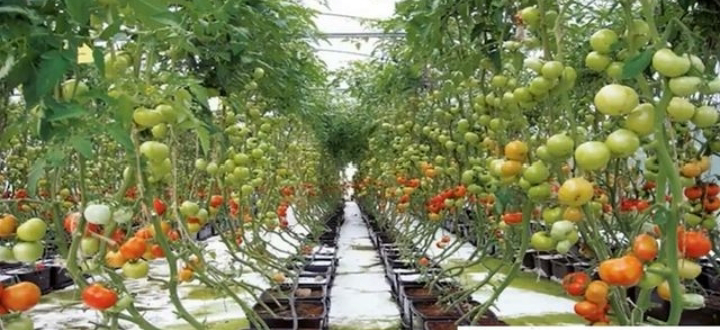Hydroponics is a soilless method of cultivating plants, including tomatoes, by providing all the essential nutrients directly through water. It offers several advantages, such as higher yield, faster growth, and better control over the growing environment.
Here's a step-by-step guide to hydroponic tomato growing:
1. Choose the Hydroponic System:
There are different hydroponic systems available, such as Deep Water Culture (DWC), Nutrient Film Technique (NFT), Drip System, and Ebb and Flow System. Choose the one that suits your requirements and available space.
2. Select Tomato Varieties:
Opt for tomato varieties that are well-suited for hydroponic growth. Cherry tomatoes and determinate varieties are often preferred due to their compact size and shorter growing period.
3. Prepare the Growing Medium:
Commonly used hydroponic growing mediums include perlite, vermiculite, rockwool, and coco coir. These provide support to the plants while allowing for good root aeration and water retention.
4. Set Up the Hydroponic System:
Follow the manufacturer's instructions to assemble and set up your chosen hydroponic system. Ensure it's equipped with a reservoir, nutrient solution pump, and proper drainage.
5. Provide Nutrient Solution:
Create a balanced nutrient solution with essential elements like nitrogen, phosphorus, potassium, calcium, and magnesium. Regularly check and adjust the pH level of the solution to maintain optimal nutrient uptake by the plants.
6. Germination and Seedling Stage:
Start your tomato seeds in a separate germination medium before transferring them to the hydroponic system. Maintain the ideal temperature and humidity to promote healthy seedling growth.
7. Transplanting:
Once the seedlings have developed roots and grown a few sets of leaves, transplant them into the hydroponic system. Carefully handle the roots to avoid damage.
8. Provide Proper Lighting:
Tomatoes require adequate light for healthy growth. Use high-quality grow lights with the appropriate spectrum (blue for vegetative growth, red for flowering) and ensure the plants receive 12-16 hours of light per day.
9. Temperature and Humidity:
Maintain optimal temperature and humidity levels for tomato growth, usually around 20-25°C (68-77°F) during the day and slightly cooler at night.
10. Pollination:
In a hydroponic setup, manual pollination may be necessary. Gently shake the plants or use a small brush to transfer pollen from one flower to another.
11. Pruning and Training:
Regularly prune the tomato plants to remove unnecessary foliage and suckers, directing energy towards fruit production. Use stakes or trellises to support the plants as they grow.
12. Monitor and Maintain:
Regularly check the nutrient solution levels, pH, and overall plant health. Adjust nutrient levels and perform system maintenance as needed.
By following these hydroponic techniques, you can grow healthy and productive tomatoes year-round in an indoor environment. Remember to research and adapt the specifics of your hydroponic system to achieve the best results.

No comments:
Post a Comment